Today is Thursday, Holy Thursday, 18 April 2019. I am at the homestead for spring break, and I was supposed to go east today for a dentist appointment and then maybe visit my homie Bill afterward, but, with severe weather forecasted for Acadiana, I had to cancel the appointment.
That ended up being fortuitous!
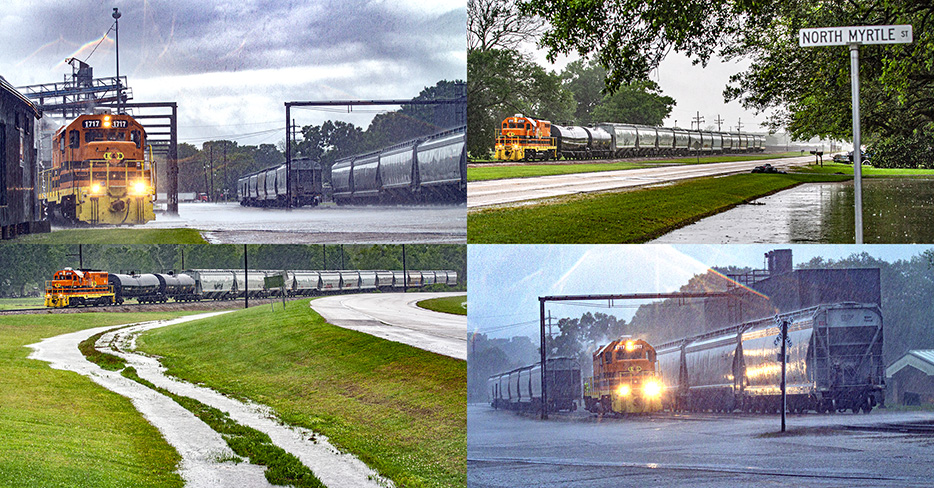
The last time that I photographed a train on the Abbeville Branch was during Mardi Gras week, and the last time that I photographed a train on the Abbeville Branch before that was during the week between Christmas and New Year’s Day. Wait! Why is my foam schedule following the off times of an academic calendar? Didn’t I give up and outgrow that stuff?
Anyway, I was out for a nice walk in the hood on this cloudy morning before severe weather comes, and I have no hat or shades on! Is this liberation?
Before the severe weather comes, I want to find out about whether the Louisiana & Delta Railroad’s Abbeville Branch will be served today, because the New Iberia Spotter told me that it would be.
So, I go and check New Iberia, and, on my way to the interchange yard, I passed by the St. Mary Street shops and get a shot of the LDRR 1504 being slowly cannibalized for parts.
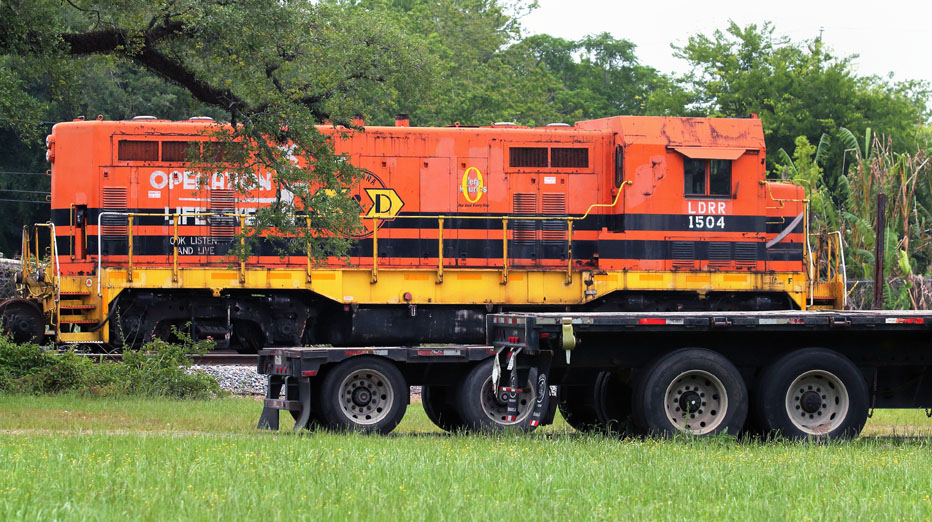
At the interchange yard, I did see three rice mill hopper cars all together, and I got some shots of the front of the parked Union Pacific New Iberia Turn that had arrived the night before.

Some time around the beginning of this year or very late in 2018, the UP abolished the MAVBT train that had, basically since shortly after UP bought the Southern Pacific railroad in the late 1990s, been the train that performed interchange between UP and LD and also abolished the Morgan City Turn, the LLD51 out of Avondale, and combined their functions into a new train, the New Iberia Turn, retaining the number 51 somewhere in the train’s name.
Especially since I, too, am migrating westward (I think that my future, whether I like it or not, is out here), I rather like this arrangement, especially because four-axle UP locomotives are often wearing fresh paint with rather neat “wings” on the spartan-cab nose.
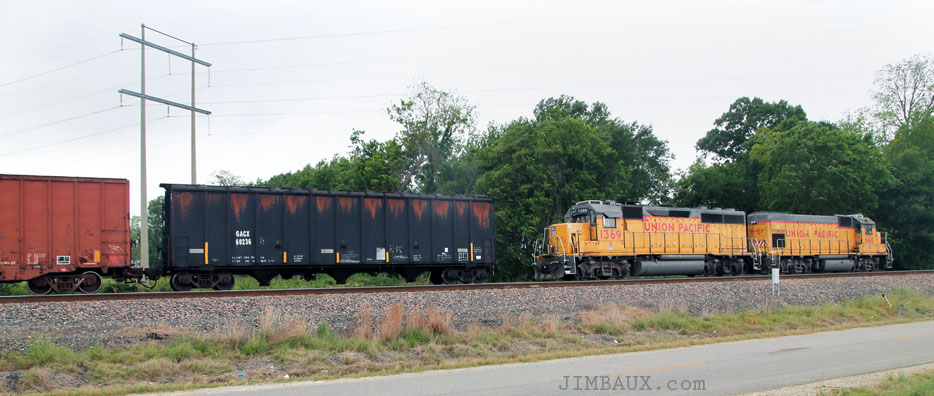
Well, with the intense rains coming, and figuring that, since I saw three rice mill hopper cars together at the interchange yard, the train wouldn’t come for a while, I should head south, back to the homestead. I stopped at a convenience store in Delcambre.
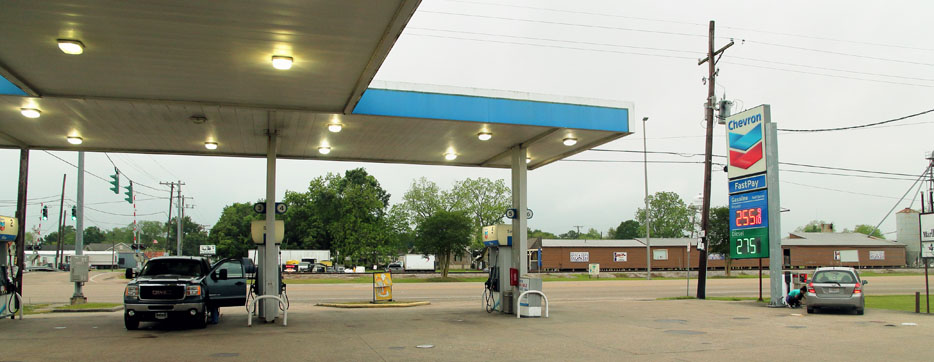
I cannot remember whether I got gasoline while there!
I stopped in Erath to photograph the parked cars there, overflow cars that the customers could not take the last time that a train came here.

This is the “West Erath” siding that was built to serve the LNG loader facility here that hasn’t shipped anything since the 1990s. The tank car is bound for the end of the branch to be offloaded for Creole Fermentation.

So, then, things get weird. The weather got really intense, as forecasted, with torrential downpours, but then the New Iberia Spotter told me that the train had already left and had been having trouble at around the Delcambre bridge.
What?
So, I head to downtown Abbeville, and I see this.
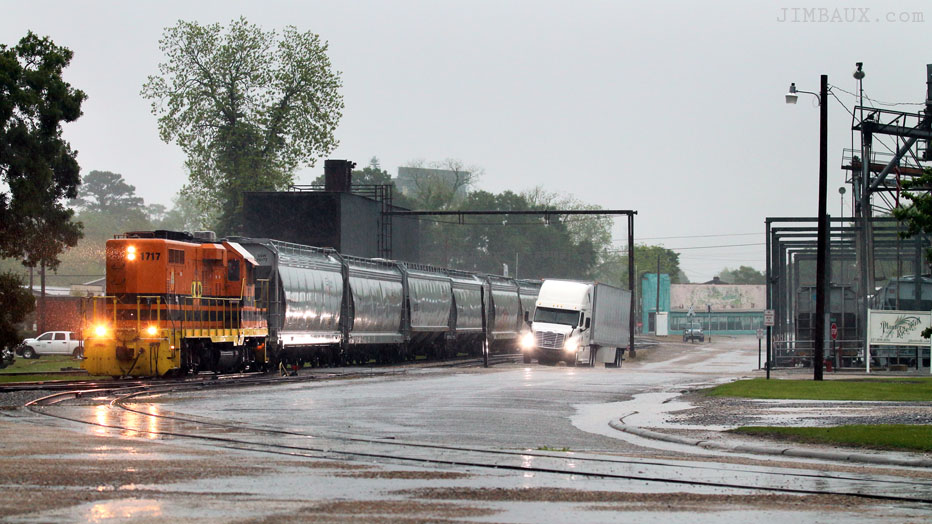
Whoah. How in the hell did this happen?
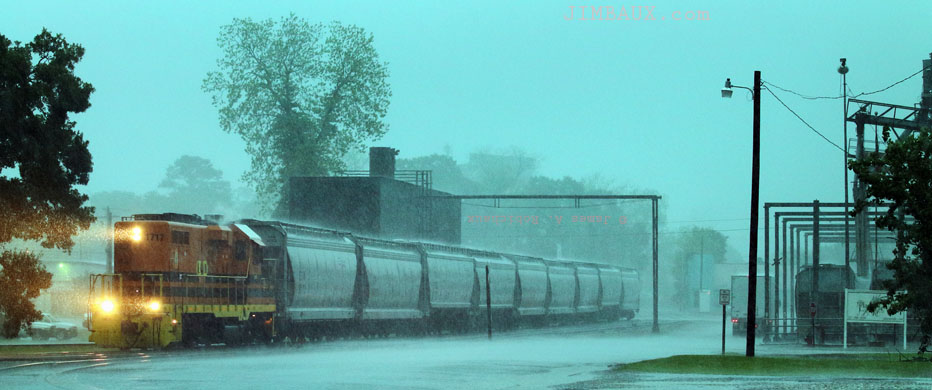
Let’s see a cropped version of that image.
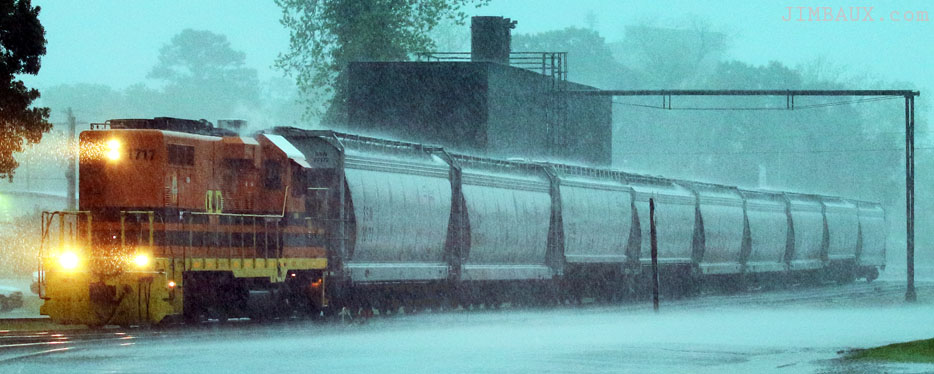
Okay, so, the train has nine hopper cars, which means that these are the three that I saw in New Iberia this morning plus the six that were in Erath, right?
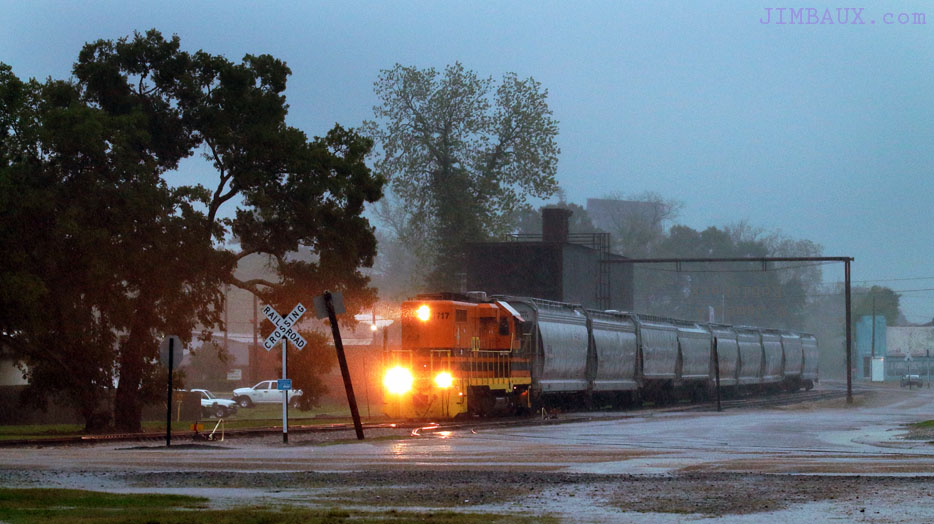
Right?
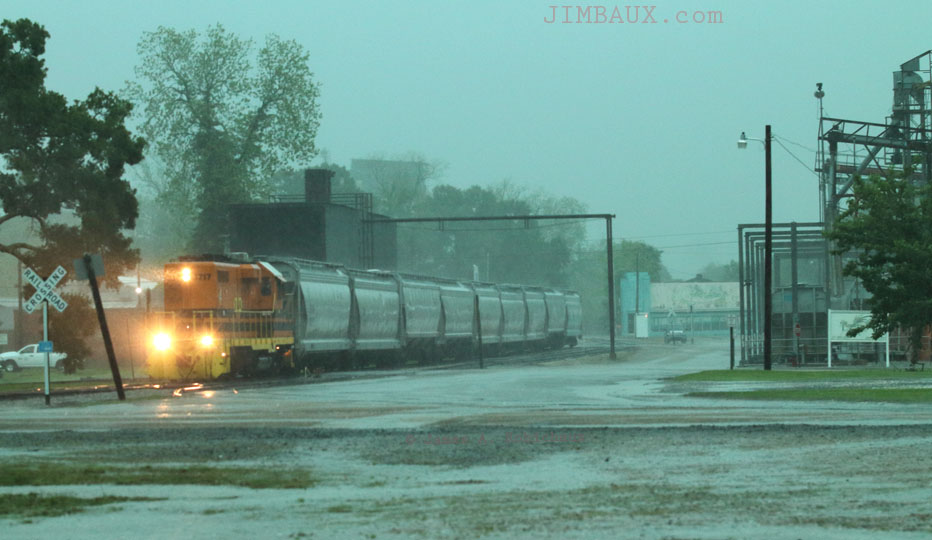
I can’t remember why, likely due to the fact that the train being in town this early shed some doubt on the theory that the three cars that I saw in New Iberia only a few hours before were on this train, but, while the train was still here and parked, as photographing whatever it might do next might be difficult, I decided to make a quick run to Erath. There, I saw six hopper cars parked in the West Erath track! WHAT THE HELL?
Even more confused than before, I headed back to downtown Abbeville, where I photographed the train now switching the mill.
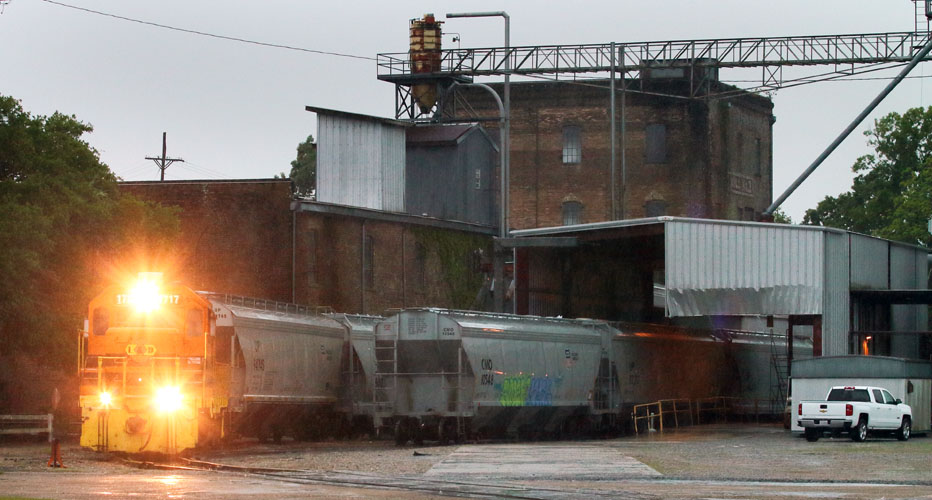
This part of the mill, the part right next to Bayou Vermilion, had been the packaging plant.

Nowadays, the mill trucks haul rice two blocks west to load the rice into railroad cars when the tracks at the mill are full of cars.
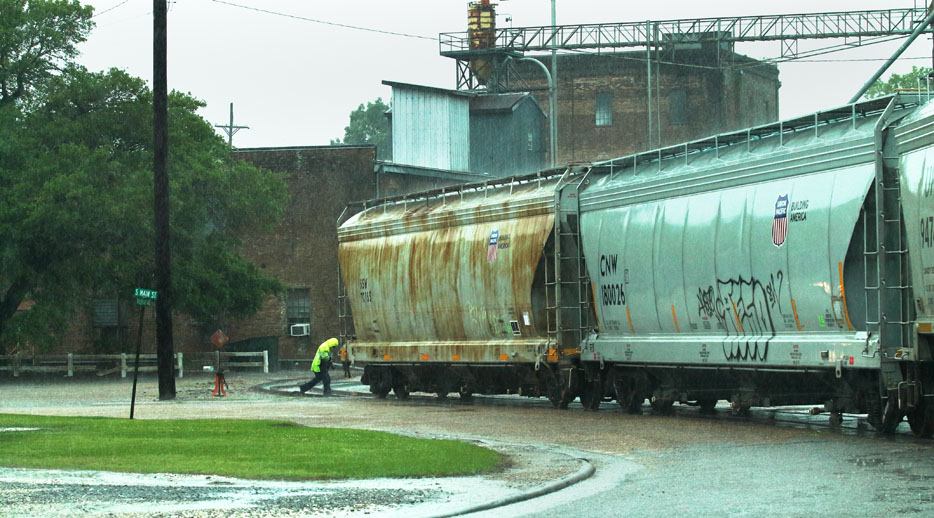
The LDRR 1717 is backing down the other track, as there are two tracks here (and a very curvy switch), to grab more cars.

Speaking of the LDRR 1717, I don’t think that I have seen this locomotive before!
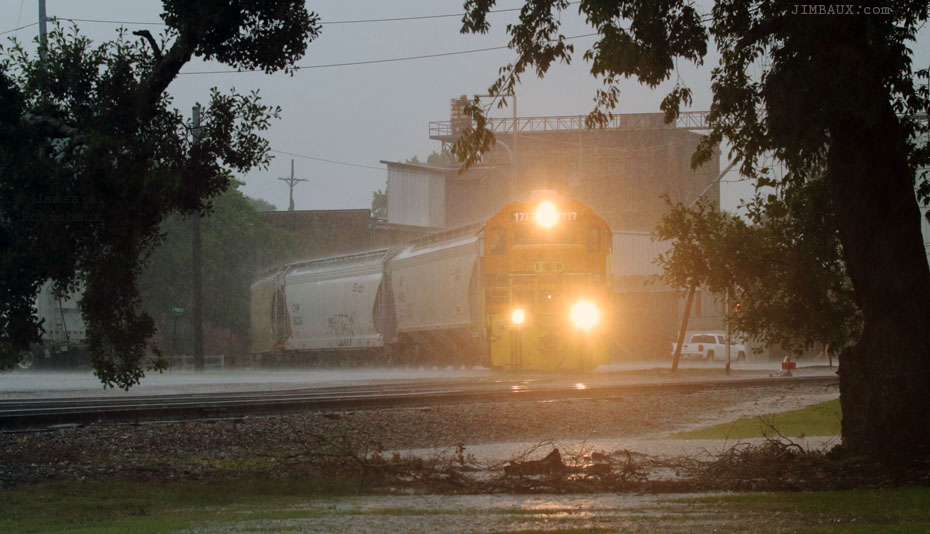
Is this a Paducah Rebuild that used the cab of some newer locomotive that had been in a wreck, or something?

Here, the locomotive is coming away from the former packaging plant with all of the cars that it pulled from there.
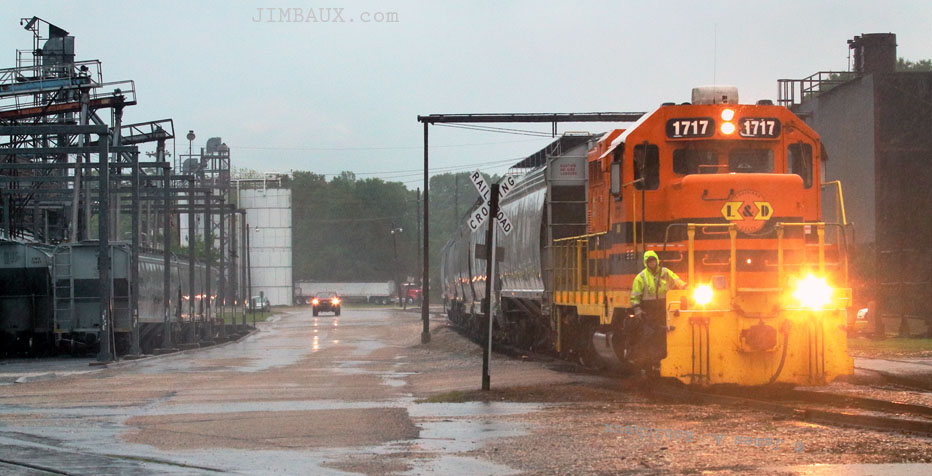
Look, it’s Peartree!
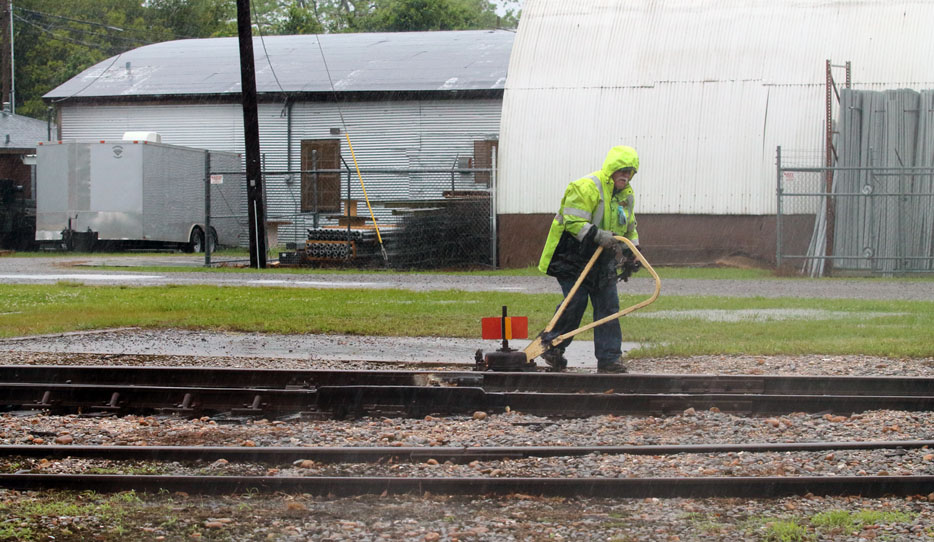
Peartree, a veteran railroader who started railroading years before I was even born, has just lined the switch at the eastern end of the runaround track after the LDRR 1717 and the cars that it just pulled from the tracks at the former packaging plant passed it so that the 1717 can grab some of the empty cars that it just brought to town.
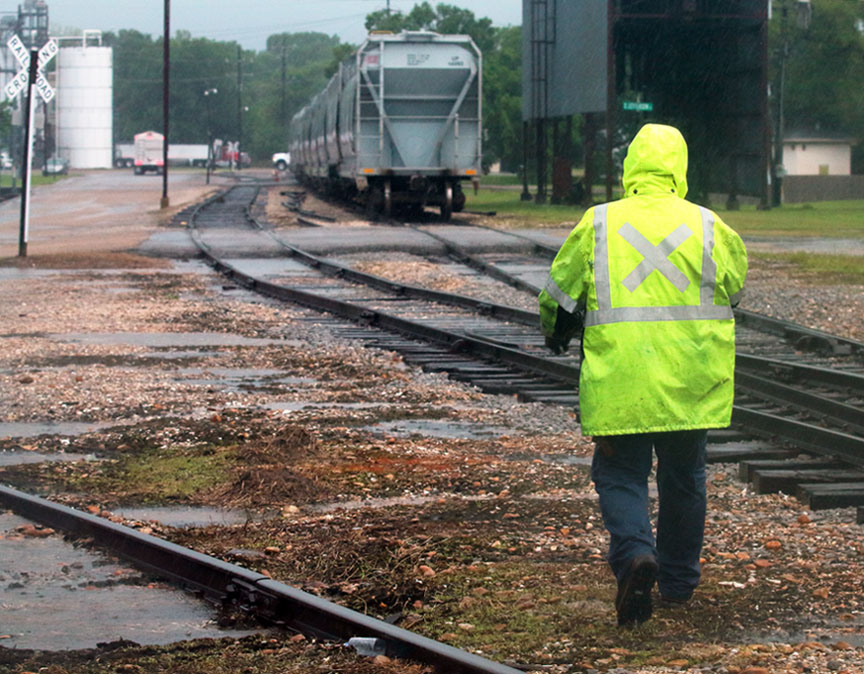
Peartree is protecting the shove, watching out for automobile traffic on South Jefferson Street.
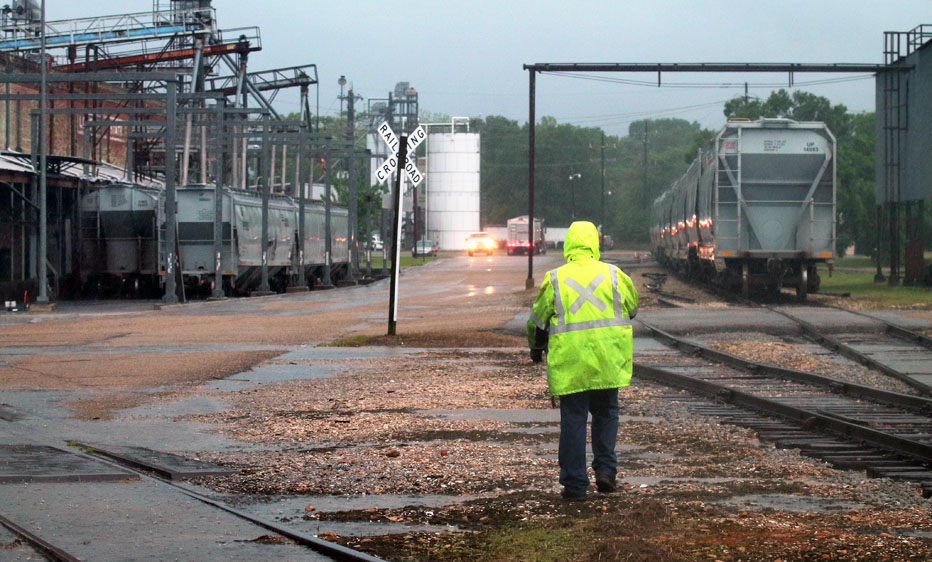
They are going to grab some of those cars in order to spot them at the former packaging plant.

Below, you see the cars just pulled from the former packaging plant being shoved at the right frame.
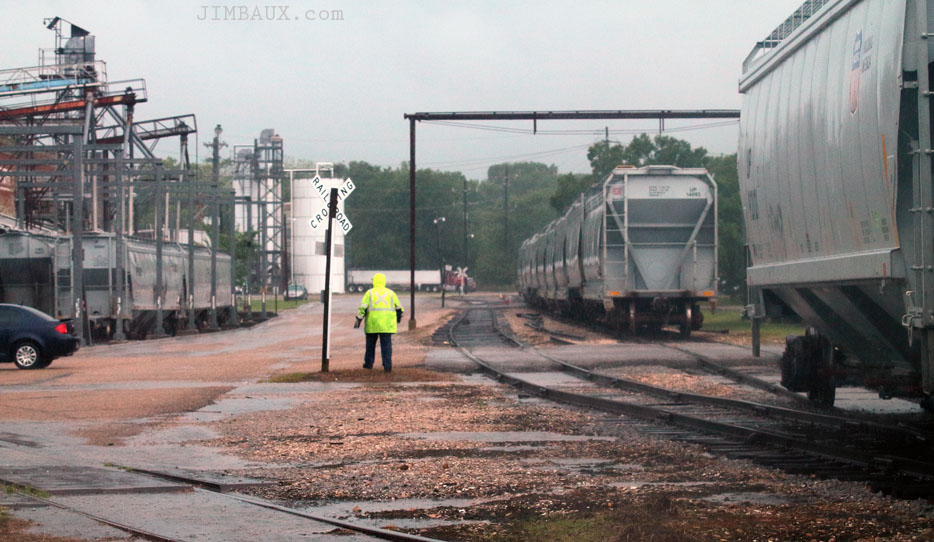
Peartree helps to make the couple after the shove is complete.

Now, below, after the train pulls back west past the switch and after Peartree realigns the switch for the siding, Peartree rides the cars, protecting the shove of empty cars to the former packaging plant.
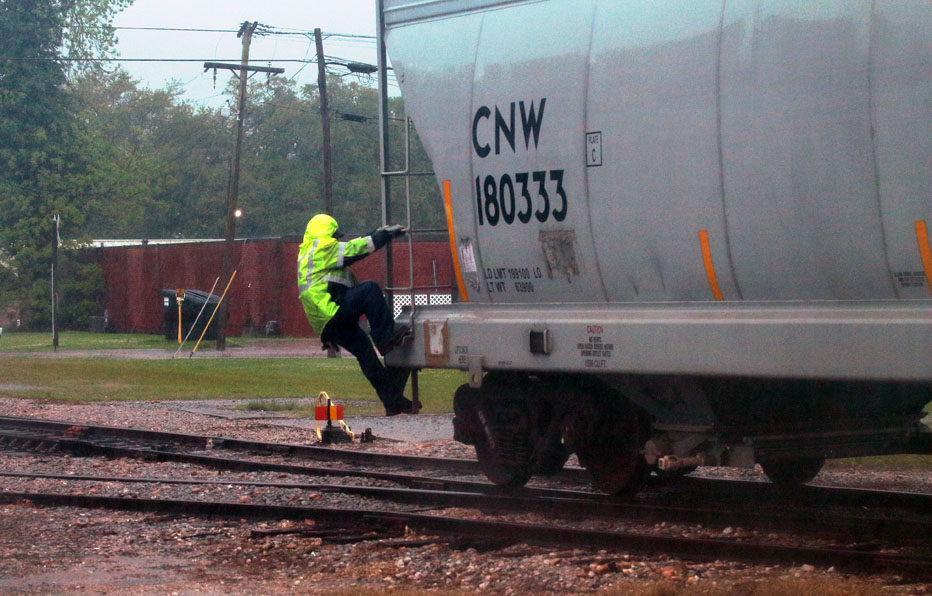
It’s really wet out here.
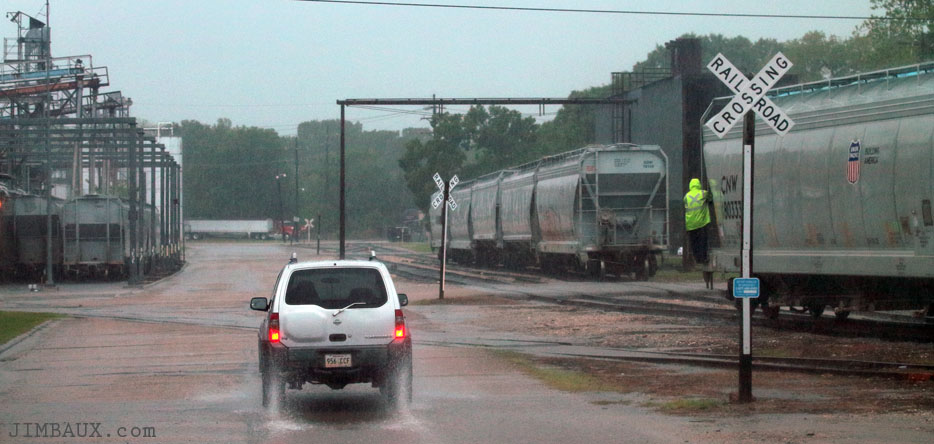
The cars in the background above are the first cars of the train that you saw above as it arrived in town. The New Iberia Spotter had figured out that this train had actually left New Iberia the night before and parked somewhere before the Delcambre Canal, as is common, and Peartree told me that, per practices dealing with car demurrage, when the nine-car train arrived at West Erath, it swapped out its first six hopper cars for the cars that had been sitting there, the cars that I had earlier photographed.
The mystery was solved!
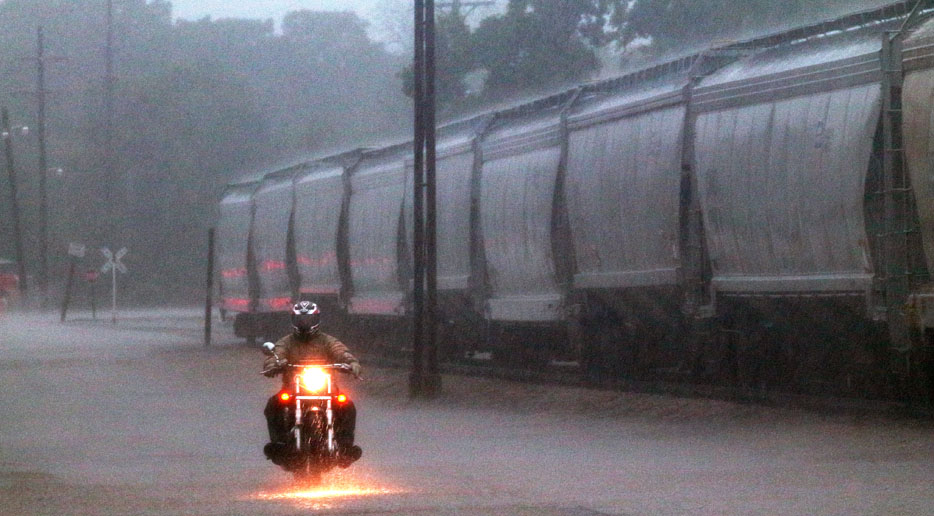
Now, off in the distance, in the pouring rain, Peartree protects the shove of cars across South Main Street.
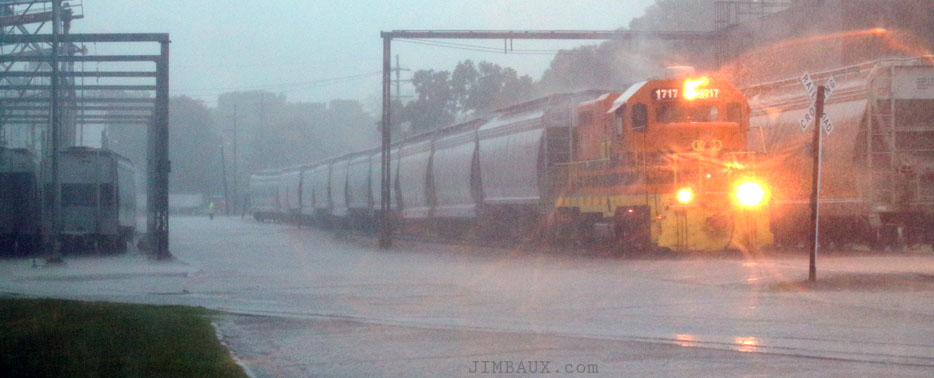
I like that view, because it shows hopper cars in four tracks along with showing the locomotive, and the rain effect on the photograph is pretty neat, too but you can see, in the form of those optical flares, evidence of another problem developing there.
The rain is really pouring now, doing damage to my camera even as I am trying to protect it, as the inbound empty cars are spotted west of South Main Street.
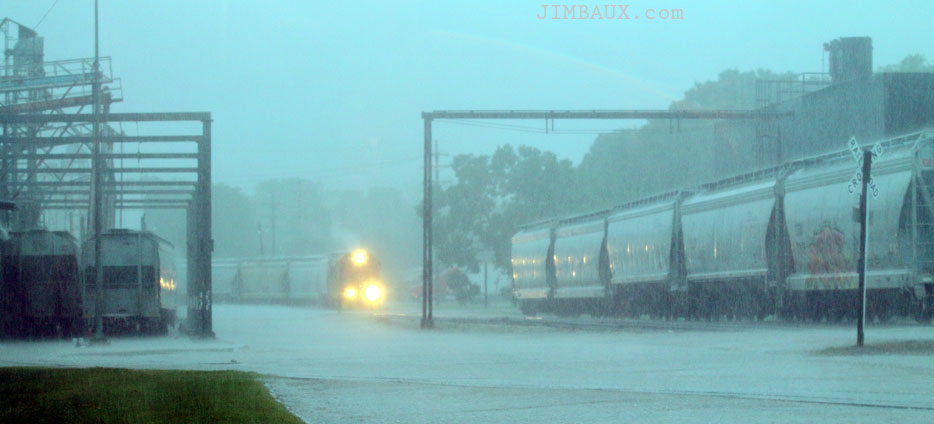
Now, below, with its work completed at the former packaging plant, the 1717 is moving eastward with the six cars that it pulled from there.
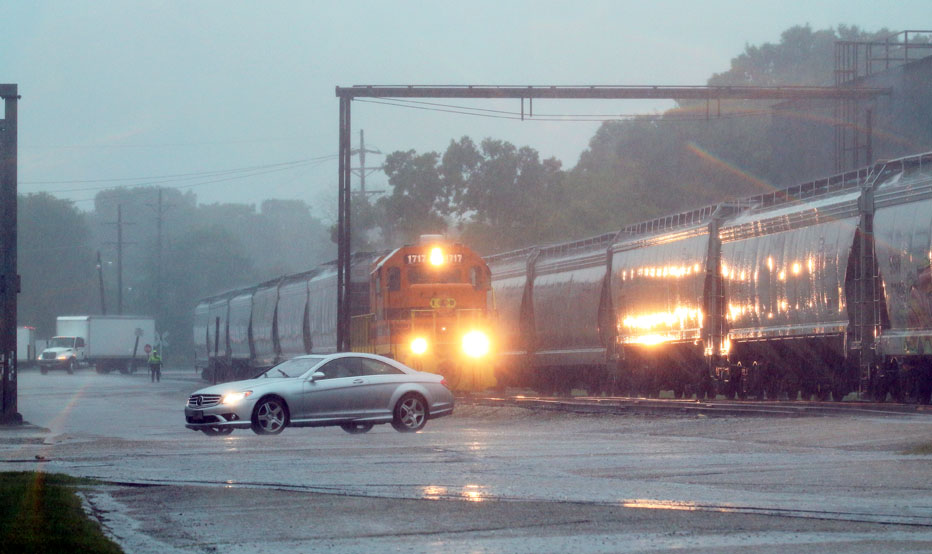
Let’s get a close-up view of this image!
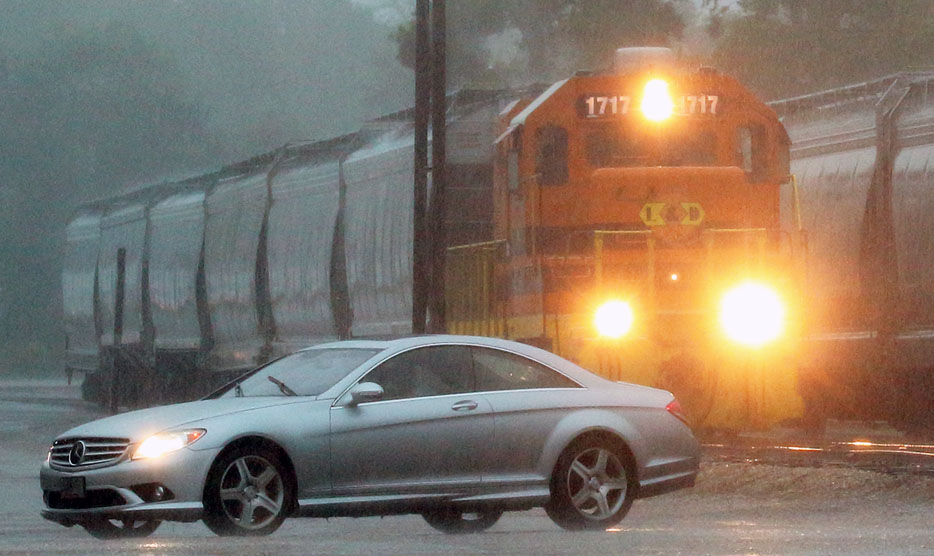
Speaking of “close up,” I hardly think about the Close Up Foundation anymore; I wonder what that means.

Soon, the 1717 will start working the main part of the mill.
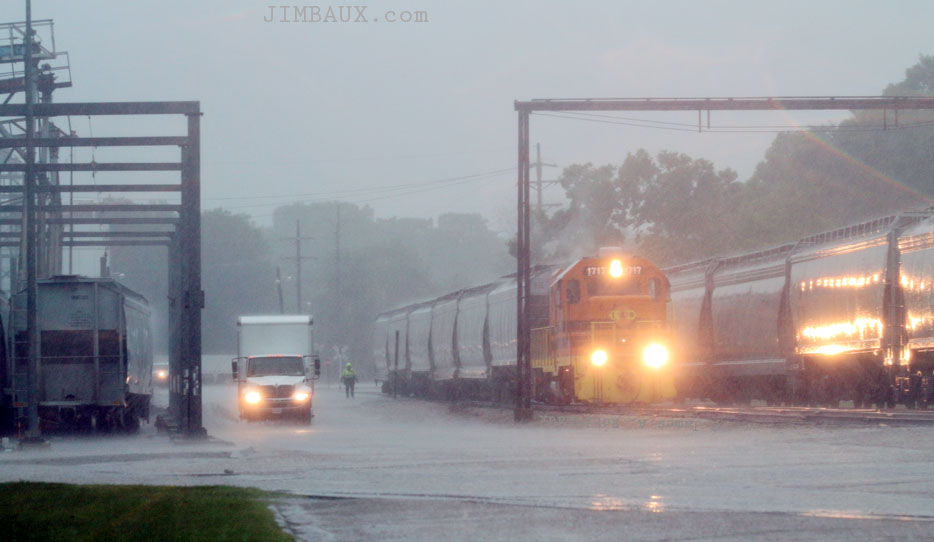
I don’t know what Peartree is doing, but maybe he is trying to figure out how much room he needs to leave on the runaround track for the cars that he is about to pull out of the main mill, and how this might necessitate leaving the tail end of the cut sticking out onto Railroad Avenue in the pouring rain.
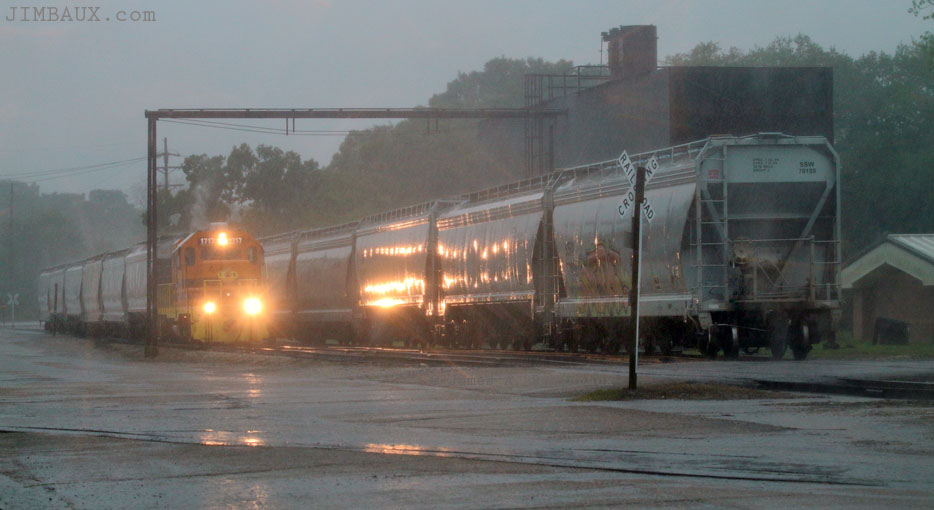
Now, the 1717 breaks off from the loaded cars that it has pulled.
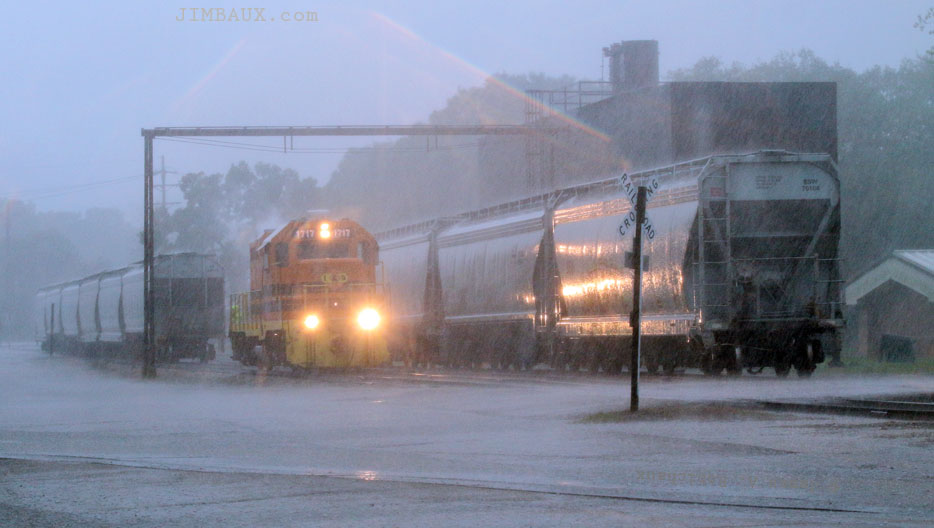
Six minutes later, the 1717 is, as seen below, retrieving cars from the main part of the mill.

The cars at right in the above image are the remainder of the cars of the inbound train, which will soon be spotted where we see the 1717 grabbing the outbound cars.
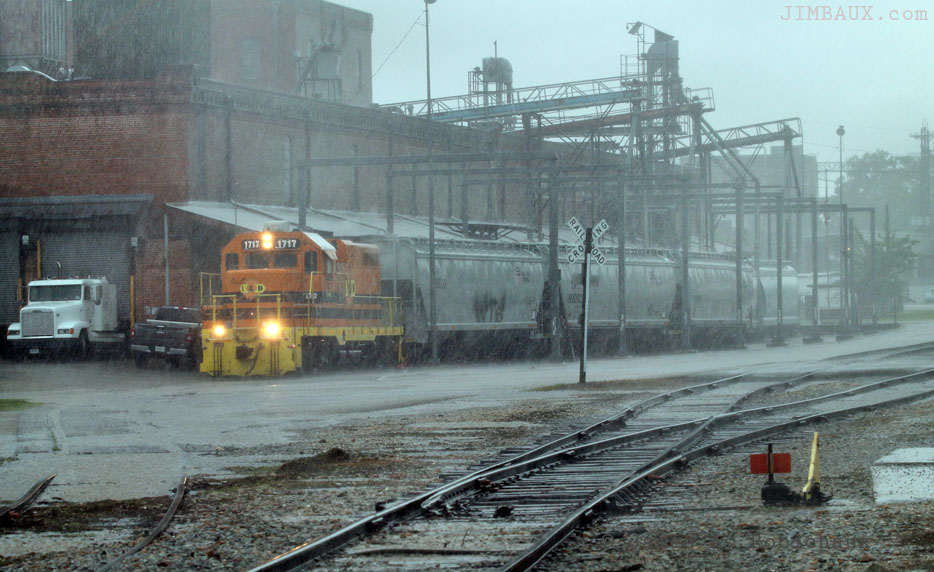
When I say “outbound cars,” we mean presumably loaded cars, but, often enough, some of the cars pulled from the mill are empty, due to the mill rejecting them due to some defect.
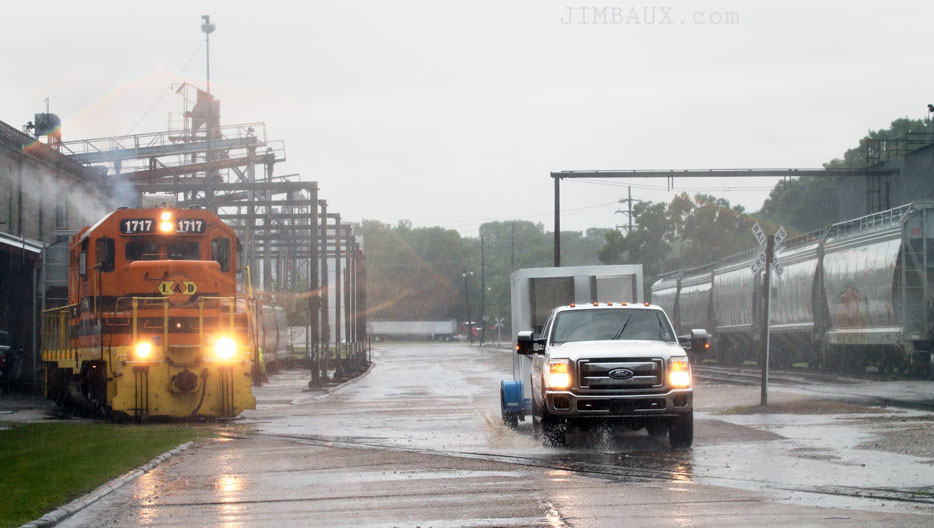
Wow, I like this view. I have never done this view before, and the skies being very overcast makes the quality of this view possible, since it would be a little bit too backlit, given the orientation of the mill in relation to the sun, without the cloud cover.
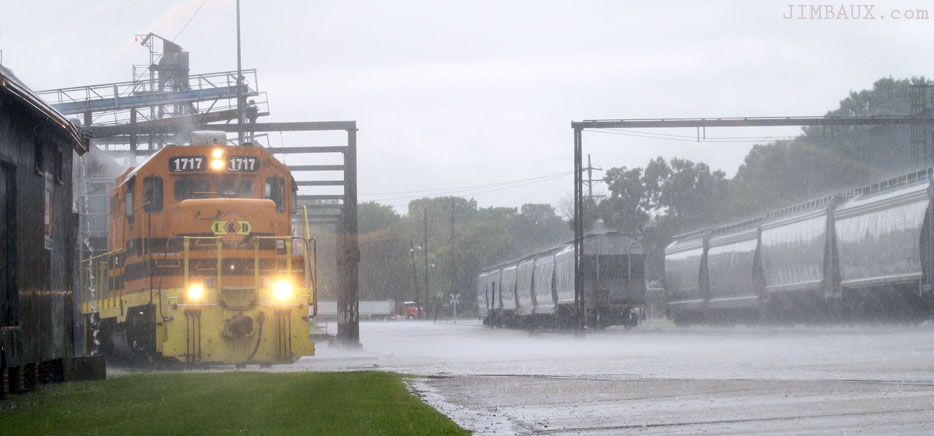
I like it! It also wouldn’t work well without the two strings of cars parked to the right; so, in essence, they are really a main portion of the subject of this image, not just background support.
Two minutes later, though, once the coupling of the two cuts of cars – because there are two tracks at that part of the mill – has been made, I am across the track on South State Street to get the view of all of the cars from the main mill being pulled.
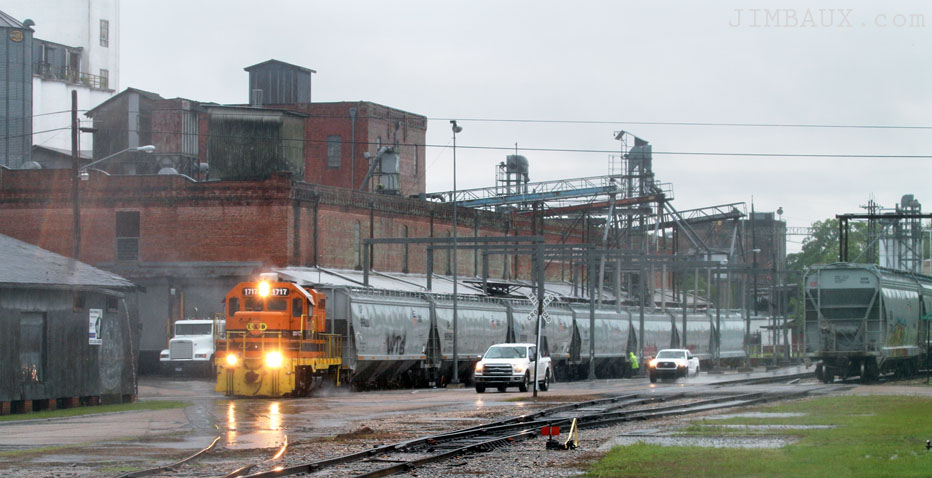
Man, that was plenty of rain; let’s have a look eastward down the branch mainline and see all of the water accumulating by the track.
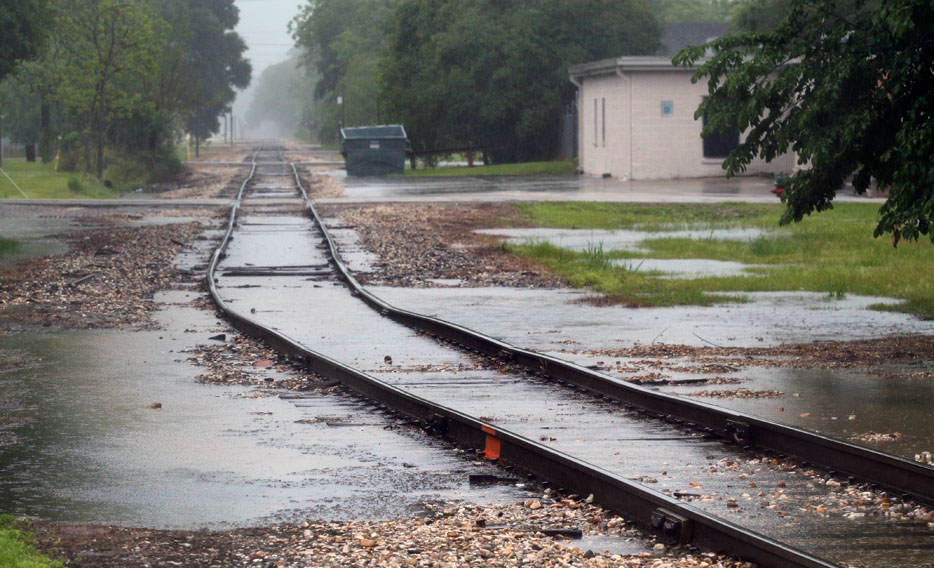
Due to what I recall being camera trouble, about 36 minutes passed between the above image and the next image. At some point, my main camera would go into a coma, maybe more than one point, and it seems to me that the flares from the headlights in the below image are more a lens problem than a camera problem.
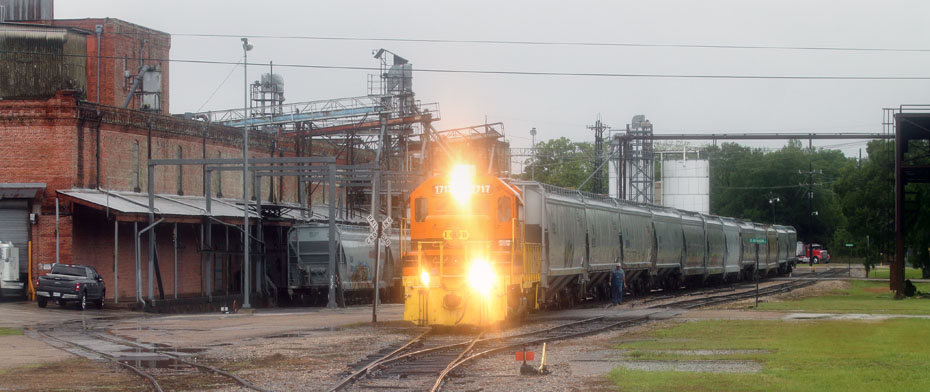
Now, there is another little ‘optical illusion’ problem involving the above image! I see 12 hopper cars in this train, and, for a while, I thought that a 12-car train was about to leave Abbeville, but the thirteenth car must be hanging over Railroad Avenue!
This is the longest train that I have ever seen Abbeville; so, I am not accustomed to this.
Okay, this view is slightly better, but, still, there are headlight blob problems stemming from the water infiltration.
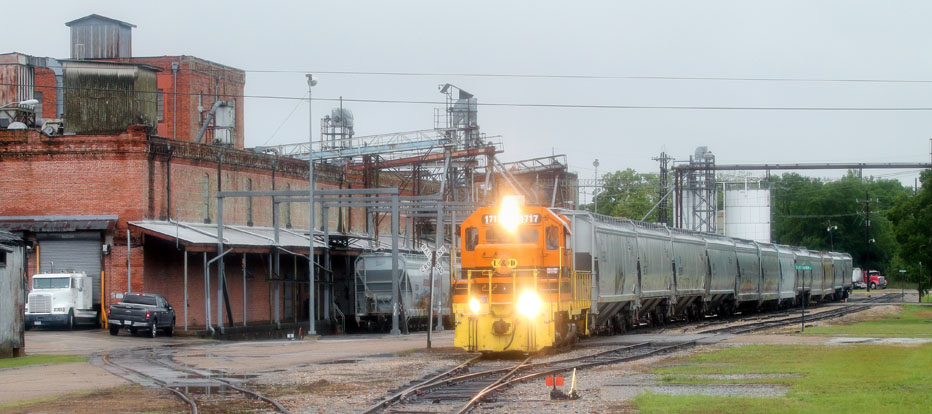
Okay now, at 15:38 CDT, the train is moving, and, hey, look, there are 13 cars!
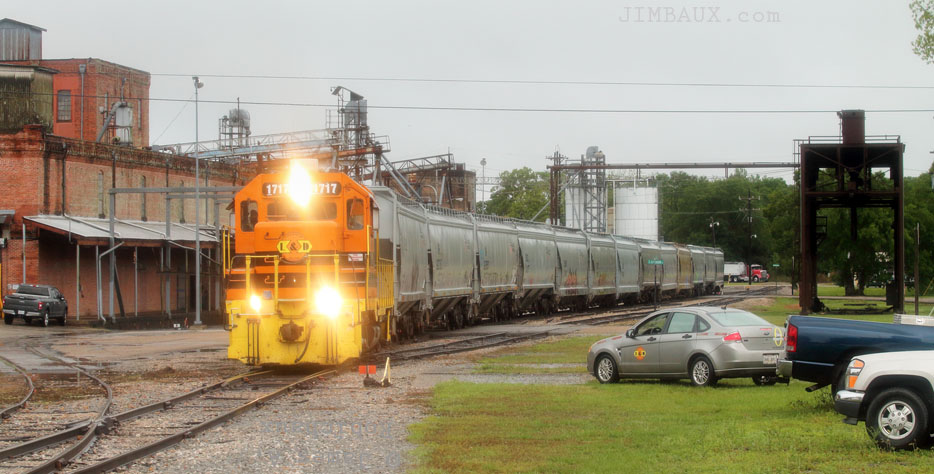
With the train needing to stop to let the crossing gates at South State Street come down, I took the opportunity to pull the telephoto lens off and put the short lens on, something that I normally wouldn’t do here, in the hopes of getting some shots of this train without the headlight flare, and I am pleased with the results.
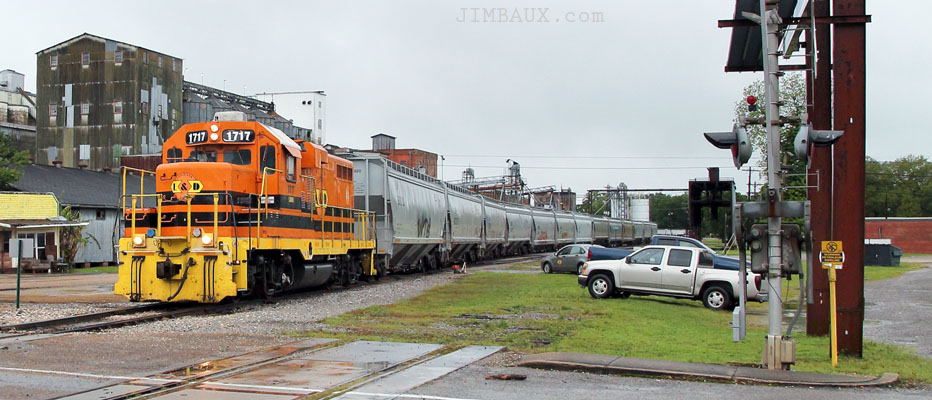
Man, the cab on that locomotive is peculiar, and I like it!

I needed an image that demonstrated the experience of the front of an eastbound train crossing State Street, and I got it.
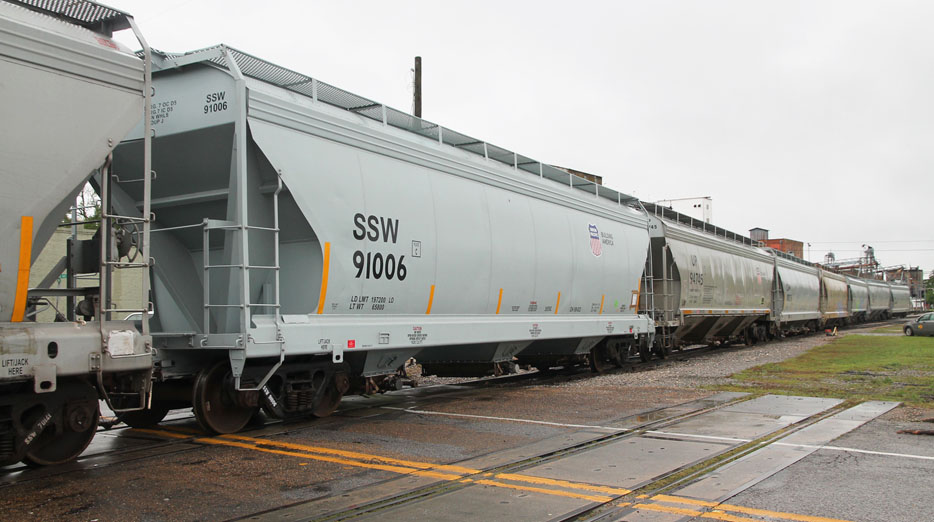
Let’s get some shots of cars that I wish still had their big “COTTON BELT” and “SOUTHERN PACIFIC” lettering on the side.
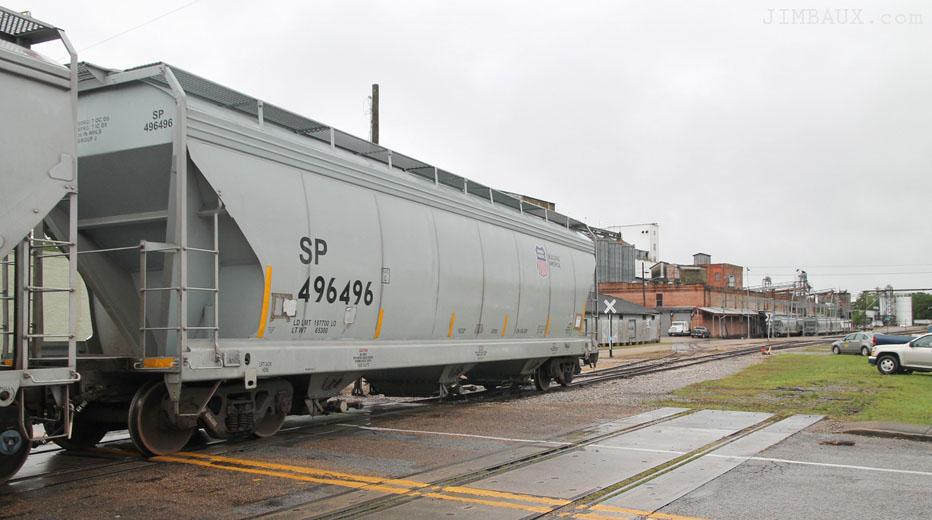
Okay, that’s it, and it’s time to chase this thing!
I am not sure if it was when I left South State Street or when I arrived at South John M Hardy Drive and tried to set up a shot that I realized that my camera was dead or, more accurately, in a coma. Anyway, the remainder of the images from this day were made with my second camera, my backup camera, which is an older model with not as good of a processor as newer models, meaning that it doesn’t handle darker situations well, which you will see in some of the fuzziness of later images.
Here is our train passing some old tipple, I guess a gravel tipple, at South John M Hardy Drive.
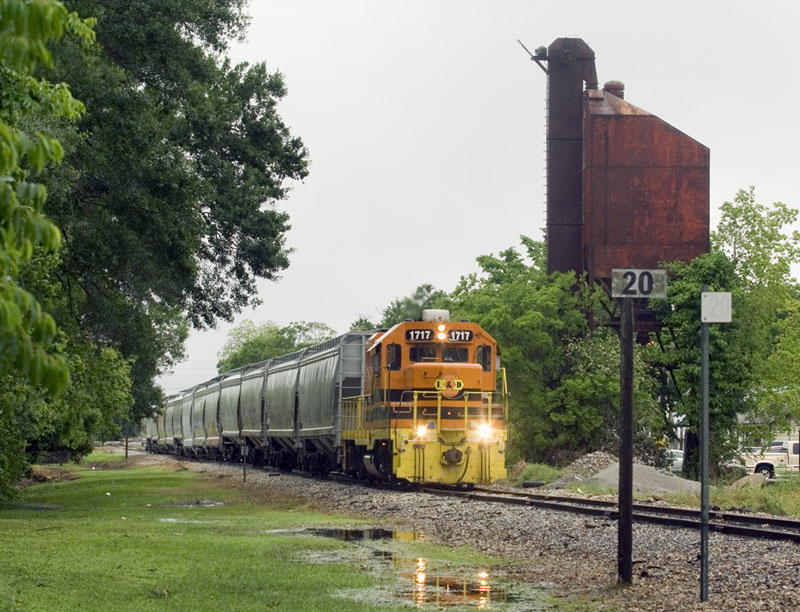
We are 20 railroad miles from the Sunset Route mainline in New Iberia!
Next, at South Hospital Road, here are a couple of broadside views.

I like shots showing a view down a road.
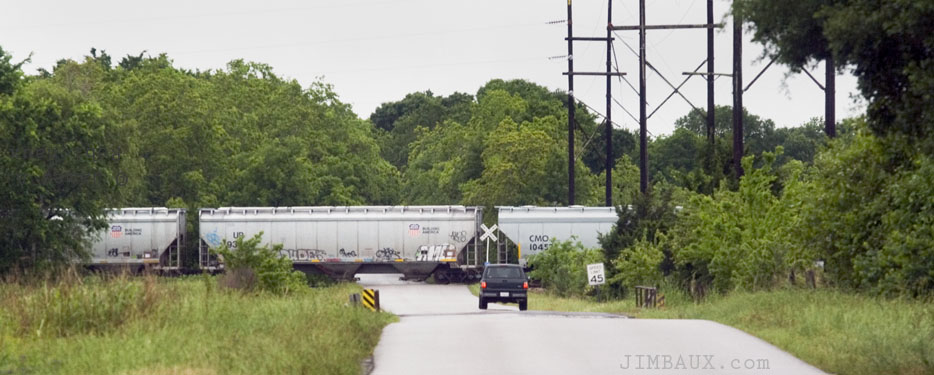
Next, we are at Airport Road, but I am really not impressed with this shot.
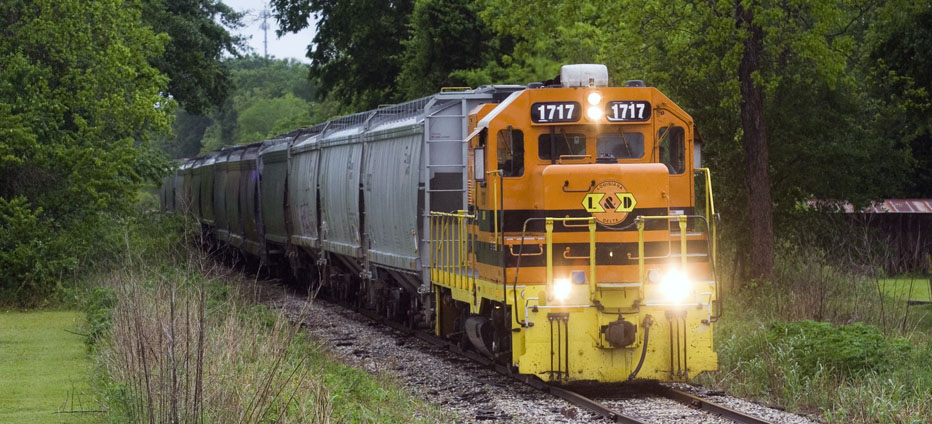
Just past Airport Road, the train has to stop to make a pickup at Coastal Chemical. So, even though the train has to move fewer than two miles between its location in the previous image and its location in the next image, the two images were made 24 minutes apart.
What else is there to do now other than my swoopy shot at Mack Switch Road on the western fringe of Erath?
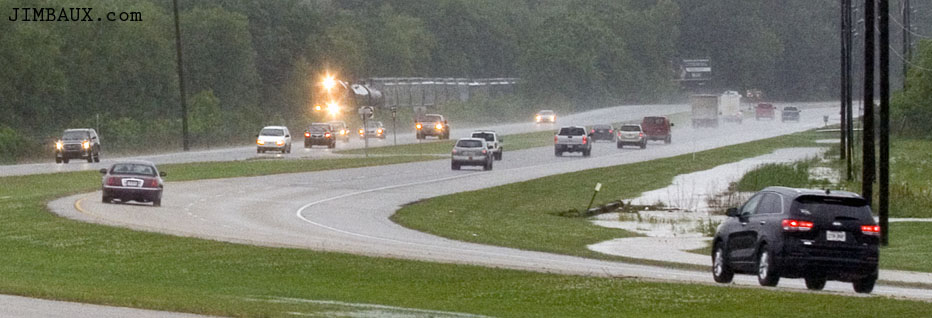
Hey, I like that, but you see how fuzzy these shots are, don’t you?

That’s partly due to how dark it is, but it’s also due to the fact that I’m using the older camera while the better one is still comatose; I hope that I don’t lose it permanently! (Spoiler alert: I didn’t.)
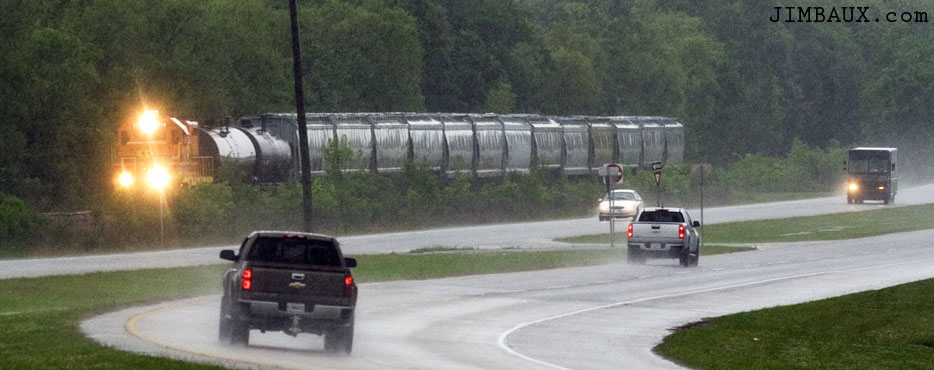
As you can see, the train picked up two tank cars at Coastal Chemical and now has 15 cars.

Given the space constraints at the rice mill and at Coastal Chemical, this is about the longest train that you could see here anymore.

I really like this location.

I know that I am being repetitive with the shots here.
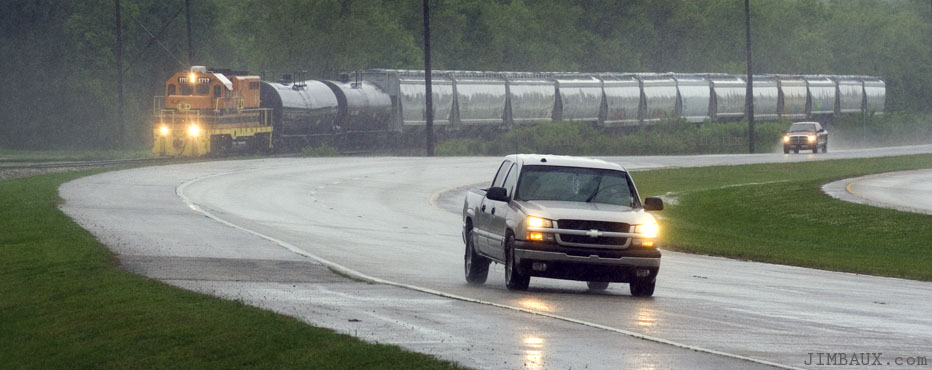
I guess that one of the reasons that I like that 1717 and its weird cab is that it somewhat reminds me of CF7s.

Finally, with this set, we see the watery trail from an unusually high amount of rain today.
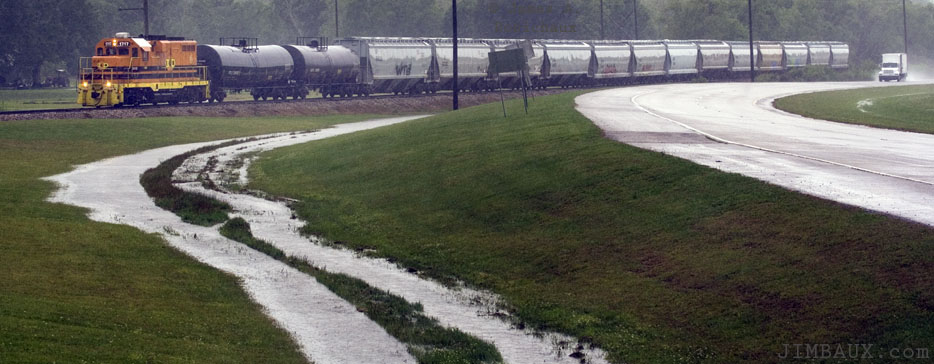
I liked that.
My way of ending the photography and train chasing on this day would be at a shot that reminded me of home.
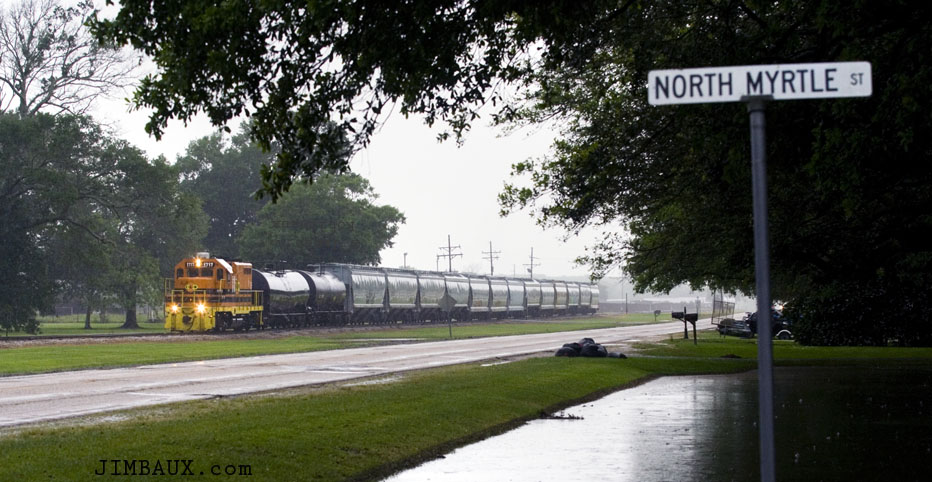
There was, until 1969, a working sugar mill here at Erath, and we are in the sugar-rice transition zone here.
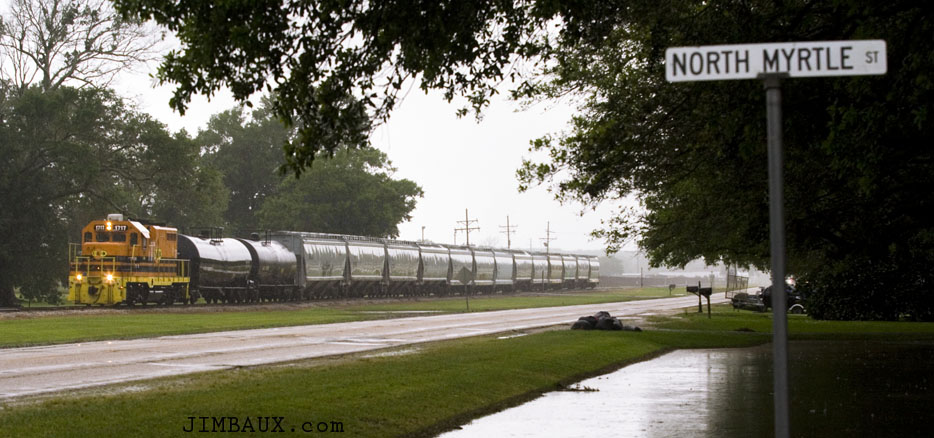
That is all, folks.
I don’t recall exactly why I broke off chase here, but it may have something to do with wanting to get to the homestead to turn a fan on the comatose camera, being quite wet myself, and-or the fact that shots east of here this time of year and with the older camera wouldn’t be that great. In any case, surprisingly, we got a few rays of sun just before the fireball slipped below the horizon, which was weird.
Anyway, though I was disappointed to have missed out on all of the shots that I could have gotten of the train as it made its way to Abbeville, I am so pleased with the results of this day, and I hope that you liked them; they are better than going to the dentist!
Remember, if you appreciate the work that I do, gain something from it, and are both able and willing to support my work, please consider becoming, for as little as $1 per month, a patron of this operation.
Merci beacoup, and see you soon.
Jim
